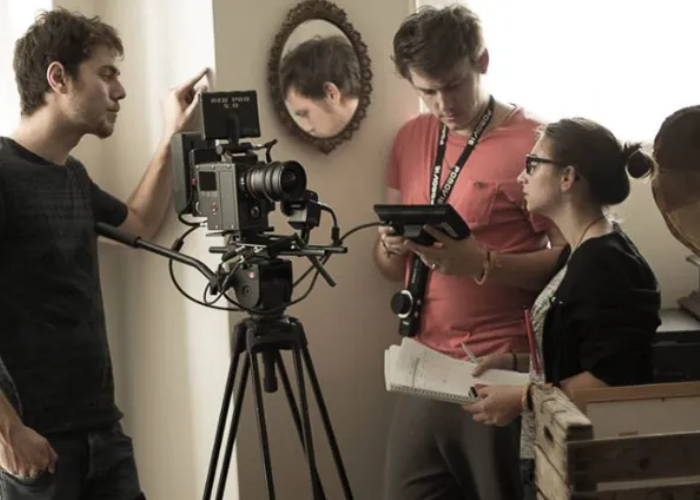Behind the Scenes: Exploring the Art and Craft of Filmmaking
Filmmaking is an art form that has grown and flourished over the years. It involves many different elements, from scripting to directing, and from camera work to editing. Making a film is a creative process that requires passion, dedication, and hard work. It is comprised of a variety of roles, from actors to cinematographers, sound engineers to musicians, and more. Crafting the perfect shots and utilizing sound and music to create emotion are two key elements of effective filmmaking. Finally, post-production techniques, such as color grading and sound mixing, are what bring the entire film together.
What goes into filmmaking?
Making a film is a complex process that requires a variety of skills and knowledge. It is a collaborative effort between a group of professionals, ranging from writers and directors to actors and editors. The first step in the process is to develop a concept for the film and create a script. This script is then used to guide the production process. From there, the director, actors, and crew create the necessary shots and scenes that will be used to tell the story.
The roles involved in filmmaking
The filmmaking process involves many different roles, from actors to cinematographers, producers to editors. Actors are the ones who bring the characters to life and play a major role in the production. Cinematographers are responsible for creating the visual look of the film, while producers oversee the entire process. Editors are responsible for assembling all of the footage into a cohesive story. Other roles include sound engineers, musicians, and special effects artists. Collectively, all of these roles work together to create a compelling film.
Crafting the perfect shots
Shooting a film is an art in and of itself. Cinematographers and directors work together to craft the perfect shots that capture the emotion of the scene. Camera angles, lighting, and composition all play an important role in creating the desired effect. Filmmakers must also consider the types of shots they are using, such as close-ups and wide shots. An effective film will make use of a variety of shots and camera angles to create a cohesive narrative.
Sound and music for films
Sound and music play an important role in setting the tone for a film. Sound engineers are responsible for creating the soundscapes that make up the film, while composers compose the music. Music can be used to evoke emotion and to help to tell the story. Sound effects are also used to create a more immersive experience for the audience.
Post-production techniques
Once filming is complete, the film enters the post-production phase. This is where editors, sound engineers, and colorists come into play. Editors assemble all of the footage into a cohesive narrative, while sound engineers mix the sound and music to create the perfect soundscape. Colorists are responsible for adjusting the color of the film and creating the desired look. Finally, special effects artists are used to create any necessary visual effects.
Conclusion
Making a film is a complex process that requires many different roles and skills. From scriptwriting to sound design, and from camera work to post-production techniques, every element is important in creating a compelling film. Crafting the perfect shots and utilizing sound and music to create emotion are two key elements of effective filmmaking. Finally, post-production techniques, such as color grading and sound mixing, are what bring the entire film together. With hard work and dedication, anyone can create an amazing film.














Post Comment